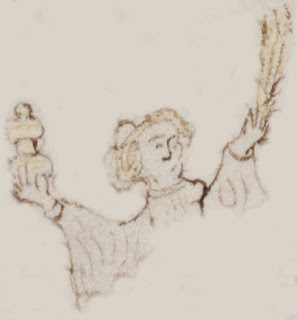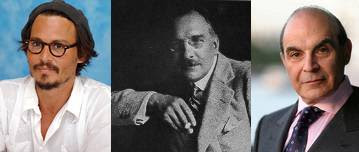While writing my MBA dissertation a few years ago, I spun off a short paper called “Justified True Belief: Three Words, Three Lies?“, where the abstract explained its title:-
Cornelius Castoriadis once famously described the Union of Soviet Socialist Republics as “four words, four lies”: here, I examine each of the three words of “justified true belief” in turn to see if that too might be based on a fatally flawed discourse. In fact, “three lies” turns out to be a little strong – but the evidence strongly points to “two-and-a-half lies”. We deserve better than this!
My guess is that Castoriadis, for all his pithiness, was ripping off Voltaire, who in 1756 wrote:
This agglomeration which was called and still calls itself the Holy Roman Empire was neither Holy, nor Roman, nor an empire.
So now, by applying the same pattern to the Voynich Manuscript, I’m extending the chain of ripping yet further. Just so you know!
What’s in a name? Wilfrid Voynich never called it “The Voynich Manuscript”: right from the start, he called it “The Roger Bacon Manuscript”. Which was a bit of a shame, given that it originally almost certainly had nothing to do with Roger Bacon.
However, because Voynich desperately wanted it to contain Bacon’s encrypted secrets, he was convinced it had to be medieval. It was in this context that he referred to it as a “manuscript”, because manuscripts are technically defined as being handwritten documents that predate the start of printing, which means 1450 or so. And so you can see that the word “Manuscript” in “Voynich Manuscript” presupposes a medieval document, or else it would have to be called “an early modern handwritten document” (which, for all its precision, is not quite so punchy). And worse, the range of dates it could sensibly have been made goes over this 1450 mark, so we have no real certainty to work from here.
As for “Voynich”: in one sense it should be “Wojnicz”, the book dealer’s surname before he ended up in London. But we sophisticated moderns should perhaps more sensibly name it after the Jesuit Villa Mondragone (where Wilfrid Voynich found it), or Johannes Marcus Marci (who inherited it and whose letter to Kircher travelled with it all the way to New Haven), or George Baresch (arguably the first obsessive Voynich researcher to be documented), or Sinapius / Jacobus de Tepenecz (whose erased signature still faintly remains on the first page), or even Holy Roman Emperor Rudolf II (who was said to have paid well for it).
All of this still rather panders to an implied need for naming, as if by giving it a name it somehow helps us understand its origins (it doesn’t, can’t, and won’t). It’s an itch we don’t actually need to scratch: we need to learn to be more comfortable about remaining in a state of uncertainty.
My dissertation was all about knowledge and uncertainty: the work I’ve done since then points to my own three-word definition for knowledge – “hopefully useful lies“. Calling this enigmatic object the “Voynich Manuscript” is indeed “two words, two lies” – but as long as we never forget that they are both lies, its name is a most useful tool.

